How to Use Lifting Straps: A Full Guide
Author:
Unlock your full potential by engaging with our experts and community! Have questions about your fitness journey or looking for expert advice on weightlifting techniques? Don’t hesitate — leave a comment below and Oleksiy Torokhtiy will provide a personalized answer and insights to help you reach your goals.
Torokhtiy is reader-supported. Some links are affiliate links, and we may earn a commission at no extra cost to you. See our disclosure page for details.
Have you ever screwed up a PR because of the bar rolling out of your hands? Then, you must have thought about buying grip straps. However, some athletes hesitate as they don’t get how to use lifting straps at once. I will make everything clear for you in this article.
Athletes use gym straps for their deadlifts, pulls, snatches, cleans, barbell rows, pull-ups, and even front squats. They wrap their wrist with a strap and fasten it to the bar in order to make the grip reliable and secure. It also helps focus on the lift and do more reps.
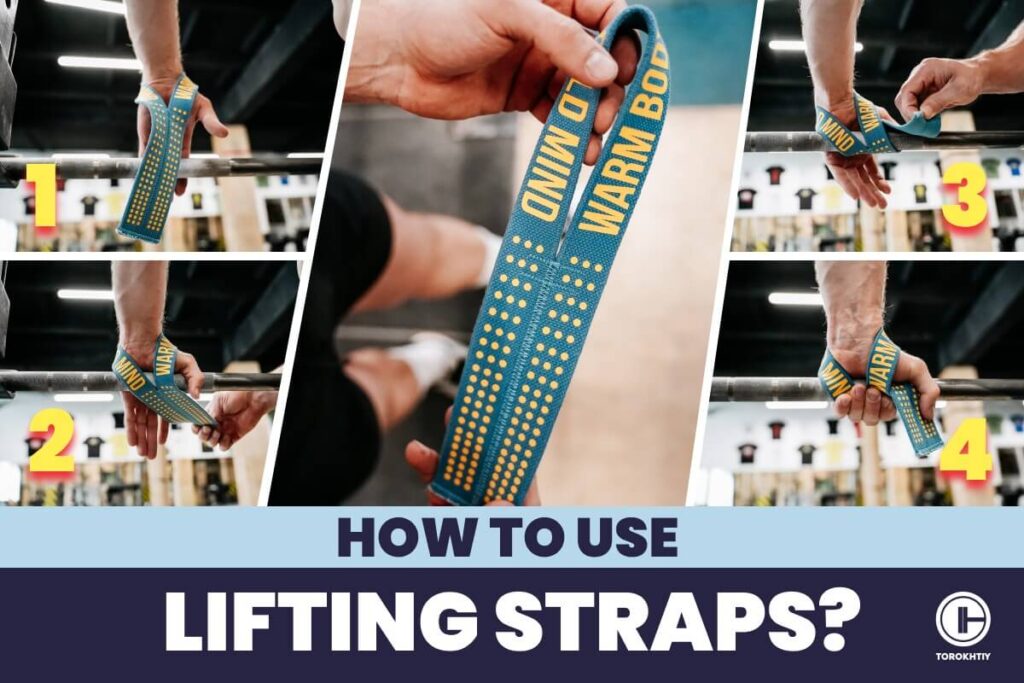
What are Lifting Straps?
Lifting straps are long pieces of different materials that athletes use in the gym while training with heavy weights to make their grip more reliable and secure. They are usually made with nylon, leather, or cotton.
There are various barbell straps on the market. The most common ones are closed-loop, lasso, and figure-8 types.
The first one is the most basic option. It is just a loop with two ends sewn together.
Such lifting straps are mainly popular in Olympic weightlifting where you need a rather light fixation to let the bar move in your palm while getting to the overhead position. However, it makes these straps less secure as well.
The lasso type is the most multi-purpose option. These straps are also more elaborate than the first ones. They have a loop for your wrist and one loose end to wrap around the bar. Some brands even add padding to make them more comfortable on the wrist.
Figure-8 straps are the most specific type. They are mainly used by strongman athletes for extremely heavy deadlifts. They have no loose ends but only two big loops to fasten your wrists to the bar really tightly.
Such straps give the most secure grip but are not versatile. They are most suitable for advanced competitive athletes.
What Do Lifting Straps Do?
Grip straps bring a lot of valuable benefits to your training. If you still have some doubts about the purpose of lifting straps, read the main advantages and make up your mind.
1. Secure Grip
This accessory helps fasten your wrist to the bar and makes the grip safer. If you have ever had some troubles with the bar slipping off your palms, lifting straps will be a way out for you. Such a situation becomes nearly impossible with them.
2. Heavier Weights
At some point of your sport path, you will find yourself in a situation where your back and legs are ready to hit a new PR but your grip screws everything up. It is natural that our forearms are a limiting factor and can’t handle as many kilos as we want.
In this case, lifting straps come into play. If you are hungry for heavy weights, this accessory must be in your gym bag. In this situation you can still challenge strength in legs and posterior chain while in the meantime keep working on your grip with different exercises.
3. High-Rep Workouts
If you are fond of high-rep exercises, lifting straps might comfort you in many terms. They don’t let the bar slip off your hands at the last few reps and help focus on the exercise rather than on sore forearms. This benefit is especially valuable for fitness athletes.
4. Big-Volume Workouts
If you perform a great number of lifts during your workout, it might be pretty exhausting for your forearms not only at one session but during the whole training cycle.
In order to let your muscles recover and maintain a strong grip, use lifting straps for some sets or exercises that aim to train other body parts.
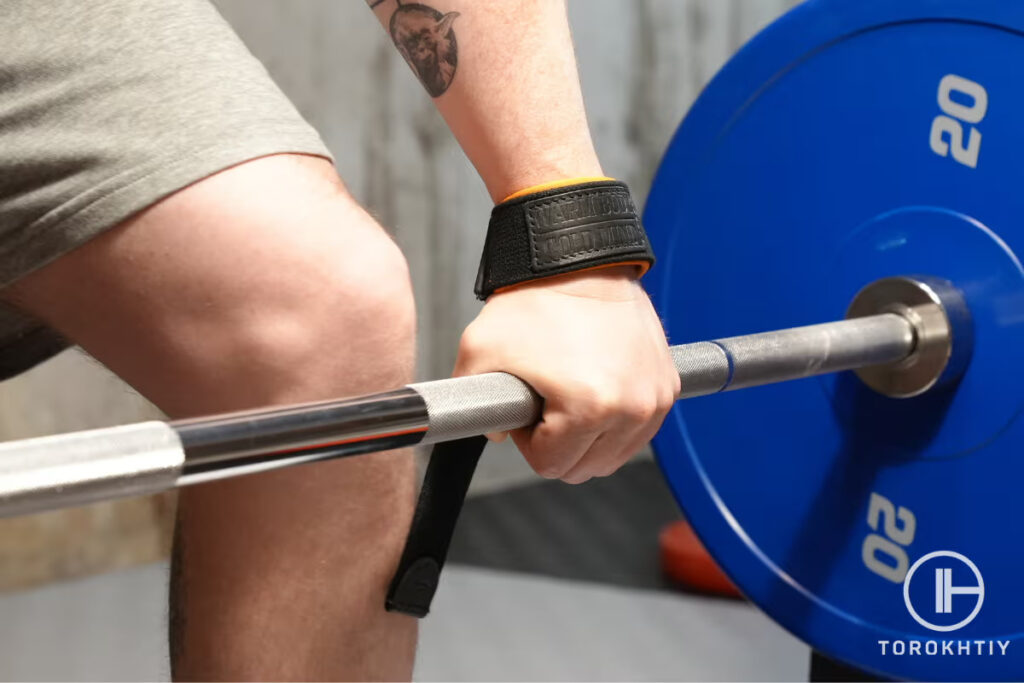
5. Palm Protection
If you struggle with calluses or torn skin, try lifting with gym straps to ease the harsh effect of knurling on your palms.
It also works if you already have some bad damages that stop you from lifting for a while. In this case, use weight lifting straps to continue your usual training routine while your skin is still healing.
6. Proper Technique
For example, if you are into Olympic weightlifting, you know that it demands plenty of technical work. Such training needs complete concentration on the exercise mechanics rather than grip issues. The same works with many isolating bodybuilding exercises.
Lifting straps help focus on particular technical elements or muscles while excluding other distractions such as sore forearms or a slipping barbell.
7. Small Palms
If you struggle with small palms or short fingers, lifting straps might be a great relief for you. They help to grab the bar more fully and tightly when you feel that it is too thick to hold heavy weight.
Such a problem is very common among girls who usually have smaller palms. In weightlifting, there is a special bar for women that is thinner but it isn’t used in all sports and isn’t available in all gyms. In this case, lifting straps can be really helpful.
When to Use Lifting Straps?
Athletes use lifting straps for plenty of pulling exercises such as deadlifts, Olympic pulls, snatches, cleans, pull-ups etc. They can also be used with dumbbells or kettlebells or when you must hold a weight in your hands for a while (e. g. the farmer’s walk).
There are some points about using lifting straps that you should always keep in mind.
First of all, don’t use them on the first day at the gym. If you only start your training path, wait at least a few months to strengthen your forearms and grip. There is no need to rush if you are a novice athlete and still lift moderate weights that don’t need extra support.
If you feel that you are ready to try out lifting straps, don’t get carried away with them. Remember to perform enough sets and exercises without this accessory or your grip will go weak after some time.
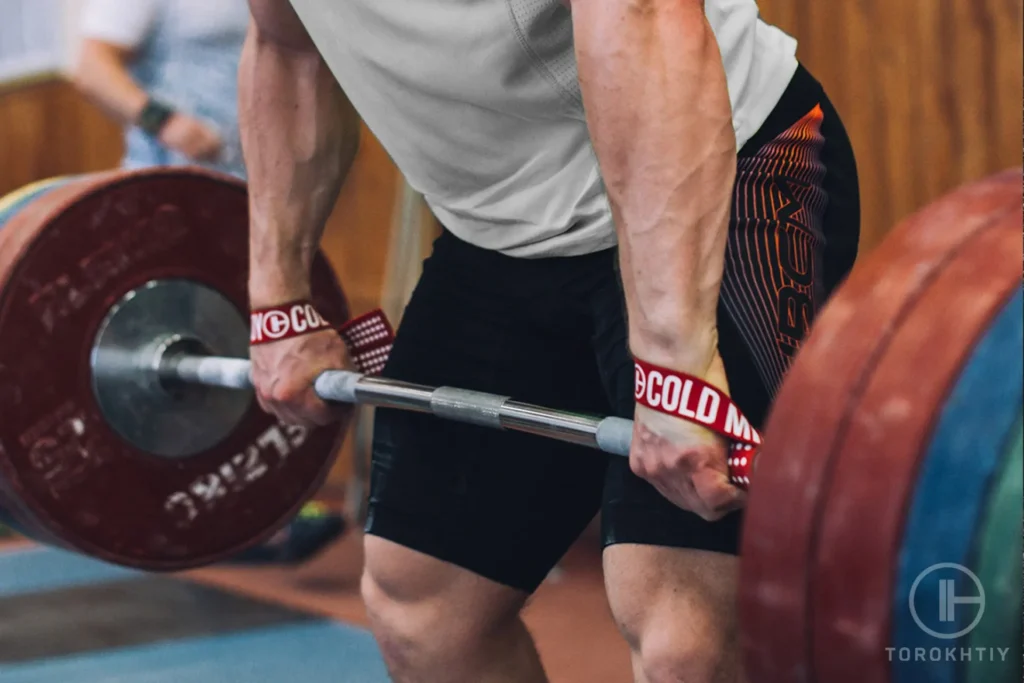
I recommend using them just for the heaviest lifts or high-rep sets. Also, if you have enough grip load within your training and want to concentrate fully on other muscles in particular exercises, feel free to go for straps.
Another case when lifting straps are essential is when you have had some upper-limb injuries. If you feel that you are ready to come back to the gym, make sure not to overstrain your weak spot for some time. Straps will take away the unnecessary load from your wrists and forearms to let you get in shape as soon as possible.
How to Use Wrist Straps?
Trying to grasp how to put on lifting straps may baffle you at once. If it seems to be complicated and long, I have some uplifting news: soon this process will become automatic and you won’t even notice how a strap catches on the bar.
To help you a little bit, I have prepared a full guide on how to use straps for deadlift.
Step 1: Choose Lifting Straps
Analyze your needs, expectations and especially your sport. If you need a versatile option to be suitable for many exercises, choose closed-loop or lasso straps. If you need the highest fixation and safety, pick the figure-8 type.
Also, pay attention to the material. You can buy cotton, nylon or leather straps depending on your preferences.
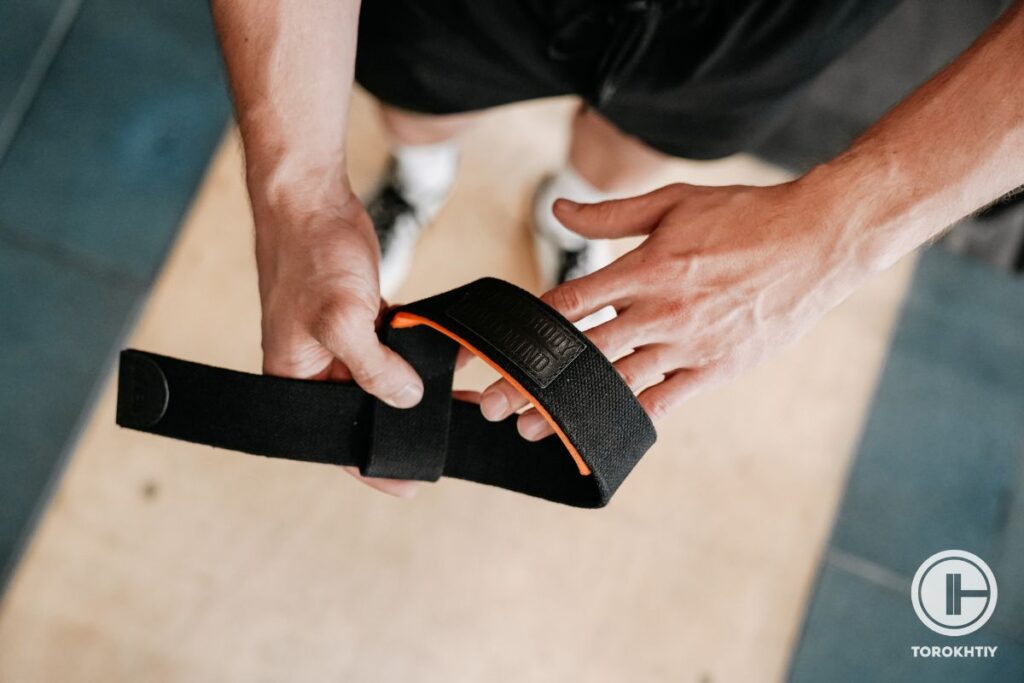
Step 2: Put a Hand Into a Loop
If you are using closed-loop or figure-8 straps, put your hands into a loop to cover the wrists.
If you choose the lasso type, take a loose end and put it into a small loop directing the hand you want to put a strap on. Then, put your wrist into this loop and tighten up slightly. The tail must point in the same direction as the thumb.
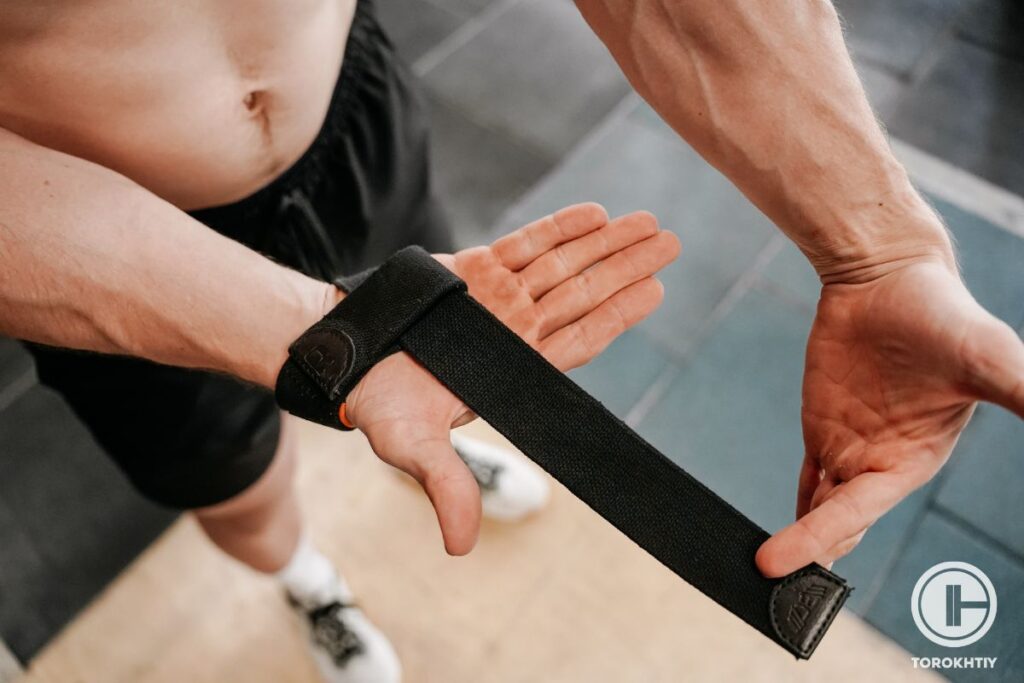
Step 3: Fasten to the Bar
It is time to wrap lifting straps over the bar. Do it with your non-dominant hand at first to help it out a bit.
If you are using figure-8 straps, just wrap another loop underneath the bar and put your wrist into it so that both loops attach your wrist to the bar.
If you have lasso straps, put a loose end underneath the bar and wrap it over as many times as you need. Remember to move over the bar but not to cover one loop with another one.
If you feel that the straps are too loose, twist your wrists and the bar a little bit to tighten them up.
In case of closed-loop straps, do the same as with the lasso type but wrap them only once.
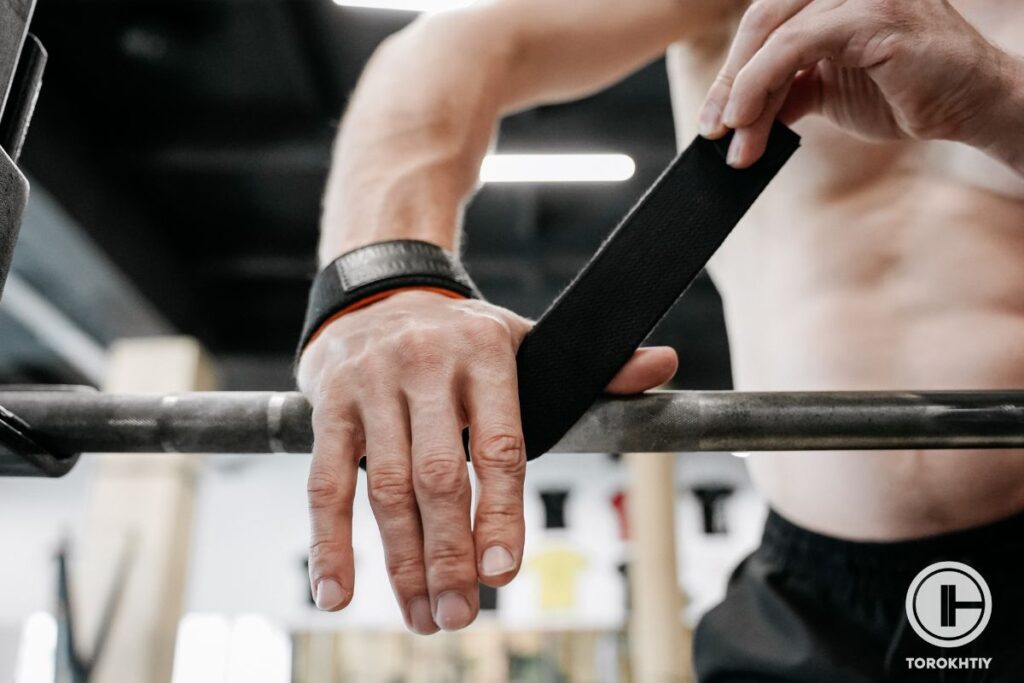
Step 4: Do the Exercise
Now you are ready to start lifting. After you have finished a set, just make your grip loose and the straps will let your wrists out.
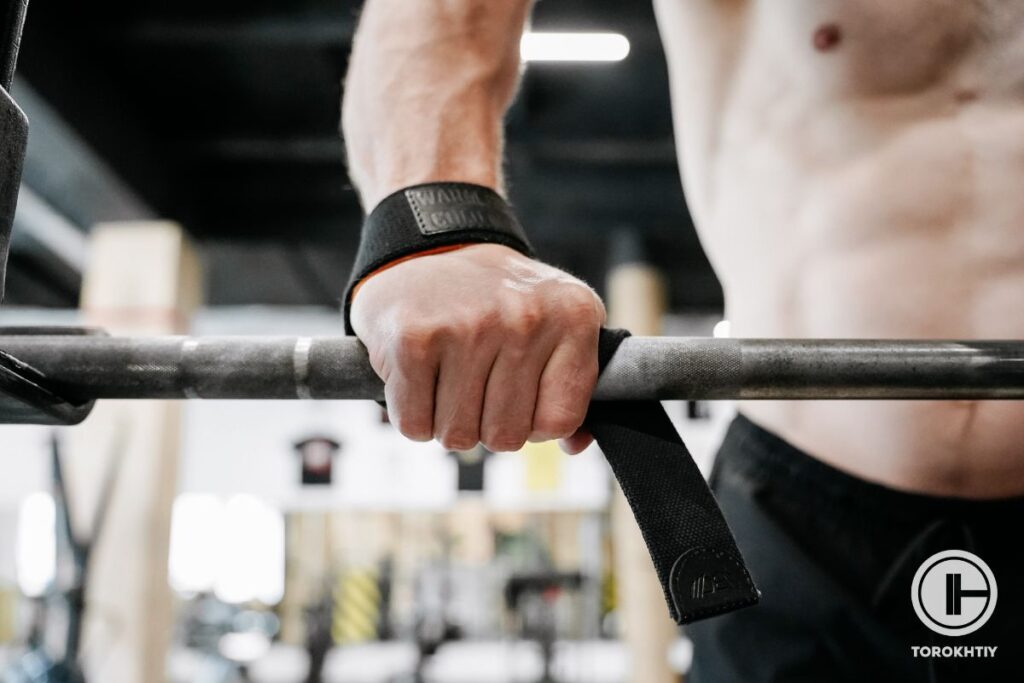
The downside of figure 8 straps is you actually need to put the bar back on the floor as you can’t just “eject” and release the grip like in case of lasso or closed-loop (keep that in mind when choosing the right straps for you). Repeat the same steps before every set and soon you will do that automatically.
WARM BODY COLD MIND Lasso Lifting Wrist Straps
If you are looking for reliable and versatile lifting straps, I recommend the WBCM option. They are made of cotton and also have neoprene padding to be comfortable on your wrists.
These straps endure up to 350 kg so you don’t have to worry about tearing them in the middle of a set. Additionally, double stitching and high-quality material provide extra resistance and durability.
Furthermore, one strap is 22 inches long and 1.6 inches wide so it will be enough even if you like wrapping it a few times.
Such a size also makes these straps really versatile and equally effective for working with the bar, kettlebells, and dumbbells. Whether you are involved in weightlifting, powerlifting, strongman or functional fitness, you might find them beneficial for many exercises.
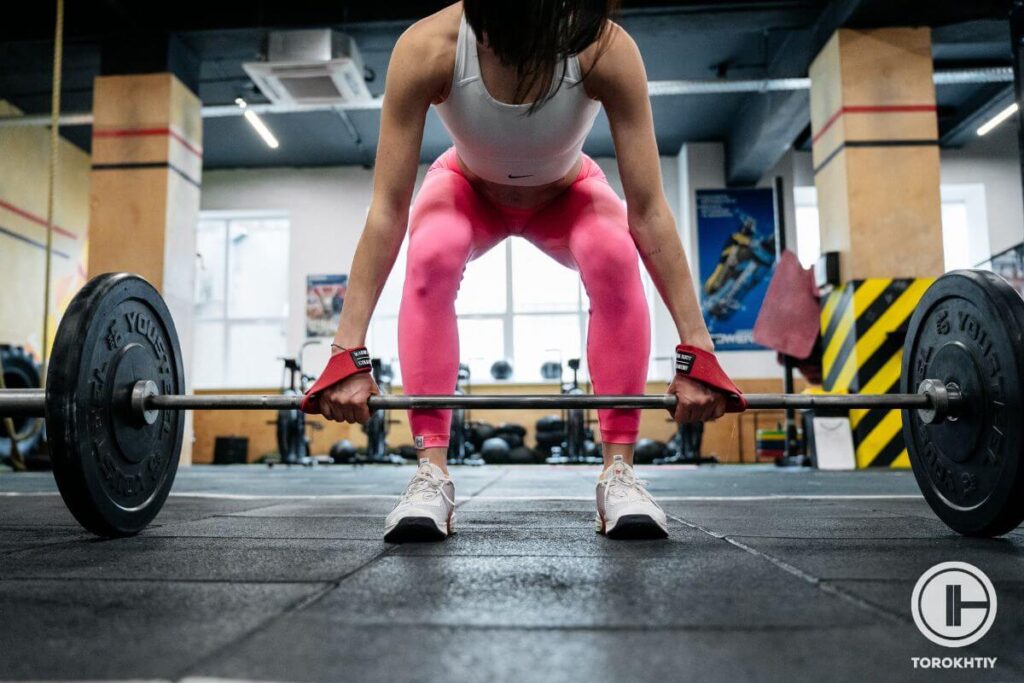
As they are made of cotton, they are rather soft on your hands and don’t leave any scuffs. The neoprene padding also makes it fit your wrists comfortably. Moreover, it absorbs sweat to eliminate the chance of a slipping bar.
FAQ
Are Lifting Straps Worth It for Beginners?
If you have just come to the gym, you better wait a few months before starting to use lifting straps. It lets you strengthen your forearms and grip to lift heavier weights in the future. So go for wrist straps only when you lack grip strength or feel any discomfort.
Is It Okay to Deadlift With Straps?
It is completely okay to deadlift with straps. But remember that they are not allowed at powerlifting competitions so you should put them aside a few weeks before competing.
However, they can be used at some strongman competitions so feel free to use them to your advantage.
Do Straps Weaken Grip?
If you use lifting straps properly, they don’t weaken your grip at all. Remember to perform some sets and exercises without them to train your forearms anyway. Try to use them only for heavy or high-rep sets or if you have enough grip load within your training plan.
Are Lifting Straps Better Than Gloves?
Lifting straps have more benefits than gloves. They fasten your hands to the bar and make the grip more reliable and secure. Also, they take the unnecessary load away from your forearms in case of injuries and help isolate particular muscles. Gloves only prevent a slipping bar.
So How to Wear Lifting Straps for the Best Result?
All in all, choose the best lifting straps for you and hit new PRs by just putting your hand in a loop and fastening it to the bar.
But don’t get too carried away! Leave some sets and exercises bare-handed to maintain strong forearms.
Share your experience before and after using lifting straps in the comment section!
Also read:
- Wrist Wraps vs Wrist Straps
- Lifting Hooks vs Straps
- Lifting Grips vs Straps
- How to Use Wrist Wraps
- What Do Wrist Wraps Do
- Leather vs Nylon vs Cotton Lifting Straps
- Figure 8 Straps Vs Normal Straps
- Wrist Straps for Deadlift
- Best Figure 8 Straps
- Kettlebell Buying Guide
References:
- The effects of lifting straps in maximum strength, number of repetitions and muscle activation during lat pull-down // ResearchGate:
https://www.researchgate.net/publication/333796074_The_effects_of_lifting_straps_in_maximum_strength_number_of_repetitions_and_muscle_activation_during_lat_pull-down. - A Sure Fire Way To Increase Your Grip Strength Using Lifting Straps // Muscle & Strength:
https://www.muscleandstrength.com/articles/increase-grip-strength-lifting-straps. - Neoprene // Wikipedia:
https://en.wikipedia.org/wiki/Neoprene. - All photos are made by Torokhtiy Media team.
Why Trust Us?
With over 20 years in Olympic weightlifting, strength training, nutrition coaching, and general fitness our team does its best to provide the audience with ultimate support and meet the needs and requirements of advanced athletes and professional lifters, as well as people who strive to open new opportunities and develop their physical capabilities with us.
By trusting the recommendations of our certified experts in coaching, nutrition, and sports training programming, as well as scientific consultants, and physiotherapists, we provide you with thorough, well-considered, and scientifically proven content. All the information given in the articles concerning workout programming, separate exercises, and athletic performance, in general, is based on verified data.
The product testing process is described in more detail here.
Author: Oleksiy Torokhtiy
Olympic Weightlifting Champion
Best Results: Snatch – 200 kg,
C&J – 240 kg
Oleksiy Torokhtiy is a professional athlete boasting 20 years of experience in Olympic weightlifting. With multiple European and World titles under his belt, he has showcased his prowess in two Olympic Games (Beijing 2008 and London 2012). Upon concluding his illustrious career, Oleksiy dedicated himself to coaching. By 2022, he had conducted over 200 weightlifting seminars worldwide. He is the visionary behind an international sportswear and accessories brand known for its motto, “Warm Body Cold Mind.” Additionally, he is an esteemed author and the creator of a series of training programs and eBooks.



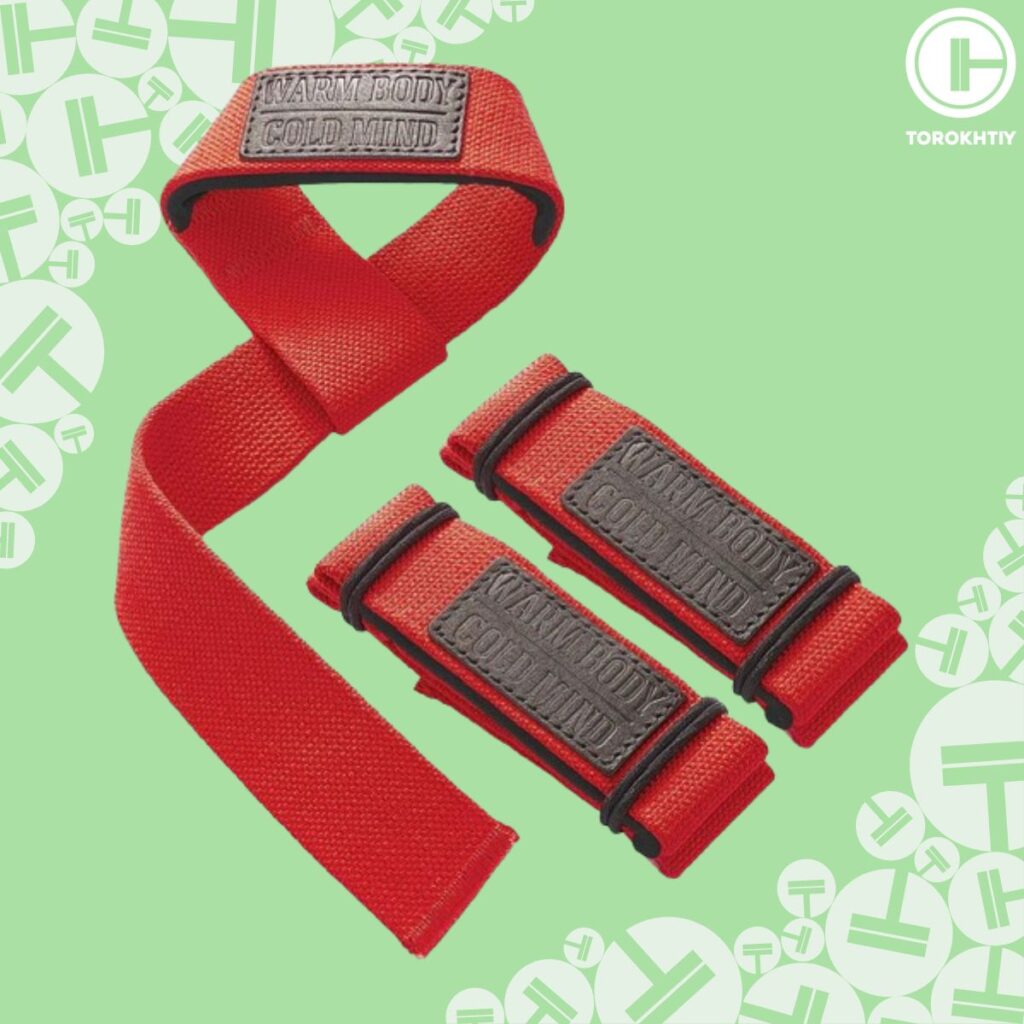
Still have questions after reading our article? Unlock your full potential by engaging with our experts and community! Don’t hesitate — leave a comment below and Oleksiy Torokhtiy will provide a personalized answer and insights to help you reach your goals.